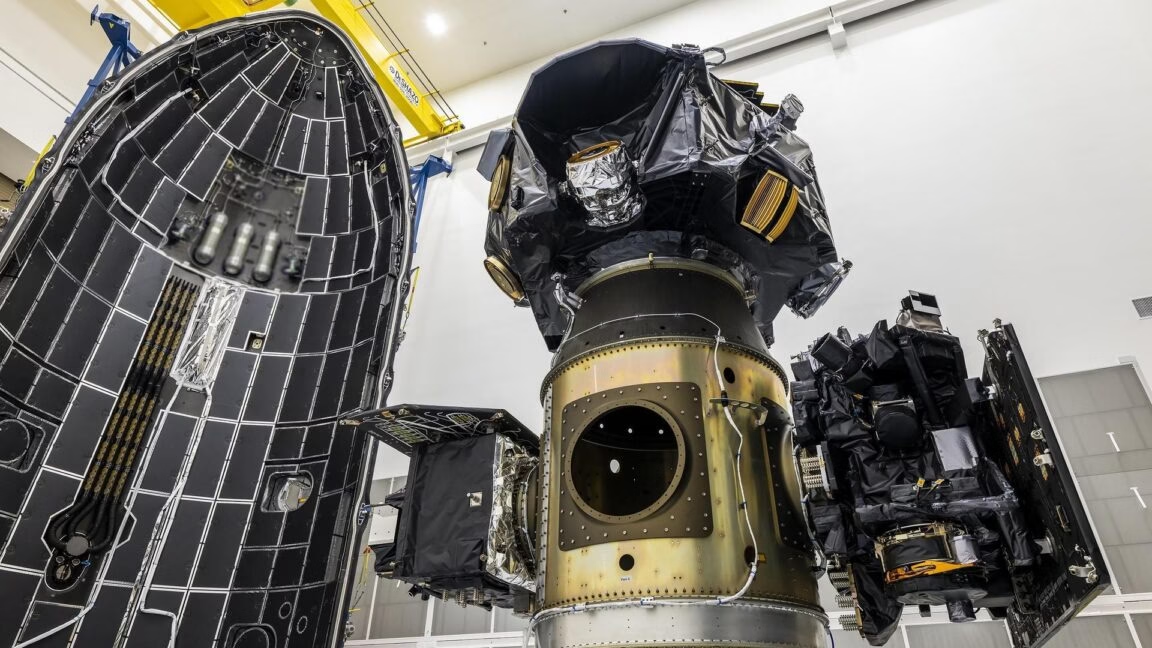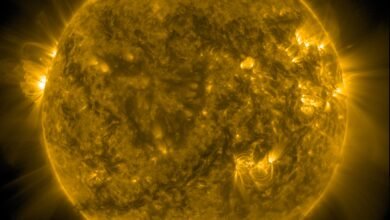Ride a Cosmic Carpool to a Distant Space Weather Post

▼ Summary
– A SpaceX Falcon 9 rocket launched three missions worth nearly $1.6 billion to an orbit nearly a million miles from Earth to study the Sun’s charged particles.
– One NOAA mission will provide real-time solar wind data to warn of geomagnetic storms that can disrupt power grids, communications, and satellite operations.
– Two NASA missions will study the boundary of the Solar System and interstellar space and observe Earth’s outermost atmospheric layer.
– The spacecraft will travel for months to reach halo orbits around the L1 Lagrange point, a gravitationally stable location ideal for solar science.
– The primary mission, IMAP, is a donut-shaped spacecraft with 10 instruments to study the heliosphere by looking both toward the Sun and toward interstellar space.
A trio of advanced scientific missions, valued at nearly $1.6 billion, embarked on a shared journey Wednesday aboard a SpaceX Falcon 9 rocket. Their destination lies almost a million miles from Earth, where they will monitor the Sun’s powerful, supersonic stream of charged particles. This unique “cosmic carpool” approach maximizes the scientific return from a single launch, sending vital instruments to a strategic vantage point for observing space weather and fundamental solar processes.
The National Oceanic and Atmospheric Administration (NOAA) contributes a crucial space weather monitoring satellite. This spacecraft will provide real-time observations of the solar wind, offering critical advance warnings of geomagnetic storms. Such events pose significant risks to modern infrastructure, including power grids, satellite operations, GPS signals, radio communications, and air travel routes. The ability to forecast these disturbances is essential for mitigating potential disruptions.
NASA’s two missions onboard have distinct but equally important research goals. One will investigate the mysterious boundary where our Solar System meets interstellar space. The other will focus its attention closer to home, studying a seldom-observed, tenuous outer layer of Earth’s own atmosphere. Together, these missions promise to expand our understanding of both our immediate cosmic environment and the broader heliosphere.
Liftoff occurred at 7:30 AM EDT from NASA’s Kennedy Space Center in Florida. The Falcon 9 rocket ascended on an easterly trajectory, its reusable first stage separating and returning to Earth for a landing on a droneship stationed offshore. The rocket’s upper stage then ignited its engine twice, providing the necessary thrust to send the three spacecraft on their path into deep space. Shortly after, each mission successfully separated from the rocket to begin an independent, multi-month cruise.
Their final destination is a halo orbit around the L1 Lagrange point. This location, situated approximately 900,000 miles from Earth in the direction of the Sun, represents a gravitational sweet spot. Here, the combined pulls of the Earth and Sun create a stable zone, an ideal parking spot for satellites designed for uninterrupted solar observation.
The lead passenger on this mission is NASA’s Interstellar Mapping and Acceleration Probe (IMAP). This spin-stabilized spacecraft has a unique donut-like shape, measuring about eight feet in diameter. Its ten sophisticated science instruments are strategically positioned to look both inward, toward the Sun, and outward, toward the edge of the heliosphere. This vast, teardrop-shaped bubble, formed by the solar wind, defines the Sun’s magnetic influence in the galaxy.
(Source: Ars Technica)

